Picasso and his importance in the history of art
Pablo Picasso (1881-1973) is one of the most influential artists of the 20th century. A genius Spanish painter, he co-founded the cubist movement and revolutionized the way reality is represented in art. Throughout his prolific career – over seven decades of creation – Picasso produced numerous famous paintings that have marked the history of modern art. His works, bold and varied, testify to limitless inventiveness and a capacity for constant reinvention. From his colorful periods to his cubist experiments, Picasso's iconic paintings continue to inspire audiences and artists around the world. In this article, we will explore Picasso's most famous canvases, understand their context of creation and impact, and delve into the different artistic periods of this essential master.
What is Picasso's most famous painting?

It should be noted that Picasso created other equally striking canvases. Les Demoiselles d’Avignon (1907), for example, is a pioneering masterpiece of cubism, often cited in art textbooks for its revolutionary nature. However, Guernica remains the iconic painting of Picasso in the eyes of the general public, both for its historical significance and its monumental visual impact.
How many paintings did Picasso paint?
Picasso was extraordinarily prolific. It is estimated that he painted around 1,800 to 1,900 paintings during his lifetime. However, this impressive number represents only a part of his total artistic output: indeed, Picasso created nearly 50,000 works of art across all categories. His overall work includes paintings of course, but also drawings (more than 7,000), engravings and lithographs (nearly 10,000), ceramics (about 2,800), and sculptures (about 1,200).
This diversity reflects Picasso's curiosity and ongoing experimentation with artistic mediums. He did not limit himself to oil painting on canvas: he explored metal or terracotta sculpture, decorative ceramics, engraving, collage, and even the creation of sets and costumes for theater. His artistic longevity (he created until his death at 91) combined with his extraordinary creative energy explain this colossal body of work left as a legacy. Thus, the number of paintings painted by Picasso is in the thousands, and each or almost each reflects a different facet of his multifaceted genius.

Picasso's paintings in the cubist style
The cubism is the artistic movement to which Picasso's name is immediately associated. Initiated around 1907 in collaboration with the French painter Georges Braque, cubism seeks to represent the forms of nature from multiple angles, breaking them down into geometric facets. Picasso's cubist paintings shatter traditional perspective: objects and characters are fragmented into cubes, cones, and cylinders, providing a simultaneous view of different viewpoints. This innovative style radically changed Western painting and paved the way for abstract art.
Among Picasso's notable cubist paintings, we can mention:
The Young Ladies of Avignon (1907) – Considered the first major cubist (or proto-cubist) painting, it depicts five nude women with angular shapes and faces inspired by Iberian and African art. This shocking canvas for its time disrupted artistic conventions and heralded the emerging cubism.

Ma Jolie (1911-1912) – A typical example of Picasso's analytical cubism. The subject (probably a portrait of his then-companion, Marcelle Humbert nicknamed "Ma Jolie") is fragmented into a myriad of almost abstract small planes. The palette of browns and grays and the interweaving of geometric shapes make the motif difficult to distinguish, illustrating Picasso's radical exploration of form during this period.
The Three Musicians (1921) – An emblematic work of synthetic cubism, this colorful painting represents three stylized characters playing music. The shapes are flattened into large, bright surfaces juxtaposed like collages. Created after World War I, this joyful puzzle-like painting demonstrates that Picasso continued the cubist aesthetic while renewing it with brighter colors and more decorative shapes.

In his cubist paintings, Picasso revolutionized visual perception. He showed that it was possible to "show everything at once" – the faces of an object, the profile and the face of a person – on a flat surface. In doing so, he freed painting from the constraints of realism and opened the door to an infinite number of stylistic possibilities. Picasso's cubist style, whether analytical (very deconstructed) or synthetic (more ornamental), is among his most famous contributions to the history of art.
Women in Picasso's Paintings
Women occupy a central place in Picasso's art. Throughout his life, the artist painted numerous portraits of women, often inspired by his companions, muses, or close ones, and these paintings are among his most famous works. Each of these female figures is represented with a unique style and emotion, reflecting Picasso's relationship with the model and the time of creation.
Some iconic female portraits by Picasso:
The Dream (1932) – This painting depicts Marie-Thérèse Walter, Picasso's young mistress in the 1930s, dozing in an armchair. The figure is treated with soft and sensual curves, a palette of bright and warm colors (pinks, yellows), and a slight doubling of the face in a cubist style. The Dream is one of Picasso's most famous portraits, symbolizing the fullness of love and the abundant creativity of the artist during this period.

Dora Maar au Chat (1941) – Here, Picasso paints his muse Dora Maar sitting on a chair, with a small cat perched on her shoulder. Dora's face is fragmented and angular, typical of Picasso's late cubist style, and the contrasting colors give the whole a simultaneously elegant and unsettling atmosphere. This painting, one of Picasso's most prized, reflects the artist's fascination with Dora Maar's complex personality.
The Weeping Woman (1937) – This heartbreaking portrait, also inspired by Dora Maar, shows a woman's face in tears, with almond-shaped eyes and a twisted mouth holding a handkerchief. Created in the same year as Guernica, it serves as its emotional extension: the weeping woman is the universal symbol of suffering. With its strident colors and distorted shapes, The Weeping Woman is one of Picasso's most powerful portraits, expressing profound pain.
Portrait of Olga in an Armchair (1917) – Picasso also painted more classical portraits of his loved ones, notably of his first wife, the ballerina Olga Khokhlova. In this painting, Olga is depicted sitting in an armchair, elegantly dressed, with a quite realistic and serene rendering. Created just after the analytical cubist period, this portrait marks Picasso's temporary return to a more traditional style and demonstrates his mastery of all pictorial registers.
Through these portraits of women, we discover the multiple faces of Picasso. Sometimes tender and loving with Marie-Thérèse, sometimes tormented with Dora Maar, or respectful of tradition with Olga, Picasso explored the full range of human emotions. His paintings of women are among his most famous and sought-after works, and several of them are now among the most expensive paintings in the world (thus, Dora Maar au Chat and Le Rêve have reached record sums at auction). These muses have undeniably contributed to shaping Picasso's art, each in their own way.
The blue period of Picasso
The blue period of Picasso (1901-1904) is one of his most famous and touching artistic phases. This period begins following a personal drama: the suicide of his close friend Carlos Casagemas in 1901 plunges Picasso into deep sorrow. From then on, his palette is almost exclusively restricted to cool tones – blue, blue-green, turquoise – which imbue his canvases with a melancholic atmosphere. The subjects he addresses during this period often illustrate misery and solitude, inspired by the lives of the marginalized observed in Paris or Barcelona.
In his bluish works, the characters seem imprisoned in their sadness. Picasso paints, for example, beggars, mothers with their children, poor old men, or melancholic circus artists. Two emblematic works from this period perfectly illustrate the emotion and simplicity of the contours characteristic of this style:
The Old Blind Guitarist (1903): It depicts a gaunt old man playing the guitar, all bathed in a uniform blue hue that accentuates the distress of the scene.

Life (1903): A large allegorical composition showing a naked couple facing a mother holding a baby, against a background of ghostly figures – a complex work that summarizes Picasso's despair and quest for meaning.
Woman with Folded Arms (1901): This canvas represents a woman with a thoughtful and melancholic gaze, a symbol of the solitude and distress that permeate this period.
Despite the gravity of its themes, the blue period allowed Picasso to assert a very strong personal style and capture the public's attention. His paintings, with simplified contours and elongated bodies, convey great emotion. Around 1904, as he settled in Montmartre and met new friends, including his future partner Fernande Olivier, Picasso's mood gradually brightened and he began his pink period (1904-1906). However, the masterpieces of the blue period remain among the most appreciated for their human depth and poignant sincerity.
The youth paintings of Picasso
From a very young age, Picasso shows an early artistic talent. It is said that his first serious drawing was made at the age of 8, and depicted a picador (a mounted bullfighter) during a bullfight – a typically Spanish scene.
In 1896, when he was only 15 years old, he painted The First Communion, a large academic painting where he depicts his sister kneeling to receive communion, surrounded by their parents. This work, very traditional in its composition and execution, already reveals the technical virtuosity of the teenager: realistic drapery, subtle plays of light, pious expressions.
The following year, in 1897, Picasso creates Science and Charity, another large canvas where a doctor examines a bedridden patient while a nun presents a bowl of broth – a scene of Christian charity that will earn him a medal at an exhibition in Madrid. Again, the young painter's mastery is astonishing for his age: the attention to anatomical detail, the careful composition, and the seriousness of the subject show that at 16, Picasso was already matching the academic painters of his time.

These youthful works of Picasso, often unknown to the general public, testify to his solid learning of the fundamentals of drawing and classical painting from his father (who was a drawing teacher) and at the Academy. Before inventing new pictorial languages, Picasso proved that he could paint in a high-quality realistic style. There are also many sketches and small paintings from his youth – family portraits, bullfighting scenes, urban landscapes of Barcelona – that show his rapid evolution. Around 1900, Picasso travels to Paris for the first time and discovers the excitement of artistic modernity. His youthful canvases then shift towards post-impressionism and personal expression, heralding the upcoming blue and pink periods. But it is fascinating to note that, even in his adolescence, Picasso was already a virtuoso of painting, capable of the best in a classical style before shaking up established conventions.
Black and white paintings
Picasso is famous for his bold use of color, but some of his strongest works are almost in black and white. By deliberately choosing a palette devoid of color, the artist focuses attention on the subject and the play of light, giving the scene a particular, often dramatic power. Two major paintings illustrate this approach: Guernica and The Charnel House.
Guernica (1937), already mentioned above as his most famous painting, is a striking example of a work in black and white. Picasso depicted the violence of the bombing of Guernica using only shades of gray, black, and white. This choice was not merely aesthetic: it reinforced the tragic and universal aspect of the scene (by recalling, through its contrast, the black and white newspaper photographs circulated at the time to show the devastation of the bombing). The lack of color avoids any distraction and allows focus on the torn shapes and expressions of pain. Guernica thus proves that the economy of means (no bright colors here) can produce an even greater emotional impact on the viewer.

A few years later, towards the end of World War II, Picasso created Le Charnier (1944-45). This painting, left unfinished, is also in black, white, and gray. It represents a scene of massacre: bodies piled up in what looks like a mass grave, a direct reference to the horrors that were being discovered at that time in concentration camps or the atrocities of the Spanish Civil War. Le Charnier is a harsh, uncompromising composition, where the barely sketched figures stand out in chiaroscuro. The work, less known to the general public than Guernica, is today preserved at the Museum ... of Modern Art (MoMA) in New York. Through its austere treatment in black and white, Picasso once again expresses his commitment against barbarism, using the simplicity of tones to emphasize the gravity of the subject. Whether with Guernica or Le Charnier, the artist demonstrated that the absence of color can, paradoxically, enhance the message of a work and its emotional intensity. These black and white paintings are among the most striking images in his repertoire, etched in collective memory.
Price of Picasso's paintings
Picasso's paintings regularly rank among the most expensive artworks on the market. The price of a Picasso canvas depends on many factors: the notoriety of the work, its historical significance, its provenance, its condition, not to mention the enthusiasm of wealthy collectors. Picasso's masterpieces exchange hands for colossal sums at international auctions, often reaching records.
Several canvases by the master have crossed the symbolic barrier of 100 million dollars. For example, Les Femmes d’Alger (Version O), painted in 1955, was sold for 179.4 million dollars including fees at a sale at Christie’s in 2015 – a world record for a work sold at auction at the time. Similarly, Le Rêve (1932), portrait of Marie-Thérèse Walter, was sold in a private transaction for about 155 million dollars in 2013 (making it one of the most expensive paintings ever sold privately). Other spectacular auctions have marked the art market: Garçon à la pipe (1905) reached 104 million dollars in 2004, Fillette à la corbeille fleurie (1905) sold for 115 million in 2018, and more recently in 2021, Femme assise près d’une fenêtre (Marie-Thérèse) (1932) exceeded 100 million dollars at Christie’s. These figures are dizzying and illustrate the almost mythical value associated with Picasso's canvases.
It is important to note that not all of Picasso's works reach such heights. The artist having produced thousands of pieces, there are drawings, engravings, or less iconic canvases on the market at more "accessible" prices (a few thousand to a few hundred thousand euros, depending on the work). Nevertheless, as soon as it comes to a major painting from a sought-after period (for example, a scene from the blue period, a portrait of a famous muse, or a historic cubist composition), prices soar. Rarity also comes into play: many of Picasso's paintings are held in museums and public collections and will never be for sale. Those that still appear in private or public sales therefore provoke fierce competition among collectors. In short, the name Picasso remains an absolute reference in the art market, synonymous with prestige – and extraordinary prices.

Conclusion: legacy and influence of Picasso
In conclusion, the legacy left by Picasso in the history of art is immense. Through his most famous paintings, he not only explored revolutionary styles but also expressed the joys and tragedies of his time with unmatched strength. Founder of cubism, a central figure in modern art, Picasso paved the way for countless artists by demonstrating that one could break academic rules to create new aesthetics. His influence extends from the early 20th century to today: it can be found in surrealism, expressionism, and many other movements that followed.
The iconic paintings of Picasso – whether it is Les Demoiselles d’Avignon which revolutionized painting in 1907, Guernica which raised awareness of the cruelty of war, or his numerous portraits that redefined the art of the face – continue to be studied, exhibited, and admired all over the world. Their evocative power has not diminished over time. More than fifty years after the artist's passing, the public still feels a particular emotion in front of a Picasso, a sign that his genius is timeless.
Finally, the appeal of Picasso's works is such that his images have now become part of popular culture. Many art lovers wish to have a reproduction of Guernica or The Dream at home, to draw inspiration from this creative breath. This enthusiasm reflects the unique place Picasso occupies: that of a universal artist whose famous paintings transcend generations and remain an inexhaustible source of inspiration.

FAQ about famous Picasso paintings
What is Picasso's most famous painting?
The most famous painting by Picasso is Guernica, painted in 1937. This monumental black and white work, denouncing the horrors of war, is considered his most emblematic masterpiece. Guernica is displayed at the Museo Reina Sofía in Madrid and is often cited as one of the most important paintings of the 20th century. Other well-known paintings by Picasso include Les Demoiselles d’Avignon (1907) and The Weeping Woman (1937), but Guernica generally remains at the top in terms of fame.
What is the price of a Picasso painting?
There is no fixed price for a Picasso painting – it all depends on the work in question. Prices can range from a few thousand euros for a drawing or print by Picasso, to several million (or even tens or hundreds of millions) of euros for his most famous canvases. For example, in 2015, Les Femmes d’Alger (Version O) sold for about 179 million dollars, setting a record at auction. Generally, most major Picasso paintings that change hands today are traded for seven or eight-figure sums. Therefore, owning an original Picasso represents a considerable investment, accessible to a very select circle of collectors.
What are Picasso's artistic periods?
Picasso went through several distinct artistic periods during his career, each with its own style and specific themes:
-
The Blue Period (1901-1904) : melancholic works with bluish tones, often depicting poverty and sadness (e.g. The Old Guitarist).
-
The Rose Period (1904-1906) : brighter paintings with pink and ochre tones, often themed around the circus and acrobats (e.g. Family of Acrobats).
-
Cubism (1907-1915): Picasso co-founds analytical cubism (fragmented geometric shapes, e.g., Portrait of Ambroise Vollard) and then synthetic cubism (more simplified and colorful shapes, e.g., The Three Musicians).
-
The return to classicism (1920s): after the Great War, Picasso paints more classical and monumental figures reminiscent of ancient art or the Renaissance (e.g., The Bathers from the 1920s).
-
The surrealist period (1930s): although Picasso is not formally surrealist, he is influenced by this movement. His works from this time feature dreamlike distortions and strong symbols (e.g., The Weeping Woman, 1937).
-
The late period (1940-1973): Picasso, until the end of his life, explores a wide variety of styles. He creates paintings inspired by the great masters of the past (series after Velázquez or Manet), expressive works with bright colors, and erotic drawings. His last muse, Jacqueline Roque, appears in many stylized portraits in the 1950s-60s.
These periods follow one another and sometimes overlap, reflecting Picasso's constant evolution. Each has contributed to shaping the artist's legend and offers a different facet of his creative genius.
Where to see the famous paintings of Picasso?
The famous paintings of Picasso are displayed in many museums around the world. To admire his iconic works, several must-visit institutions:
-
In Spain, his homeland: the Museo Reina Sofía in Madrid houses Guernica. The Picasso Museum in Barcelona, on the other hand, gathers a large collection of his early works and his blue period.
-
In France, where Picasso lived for a long time: the Picasso Museum in Paris (Hôtel Salé) showcases hundreds of the artist's works (paintings, sculptures, ceramics…), including masterpieces from various periods.
-
In the United States: the Museum of Modern Art (MoMA) in New York houses Les Demoiselles d’Avignon as well as several key cubists. The Metropolitan Museum of Art in New York and the Art Institute of Chicago also hold important canvases by Picasso.
-
Elsewhere in the world: the Tate Modern in London, the Museo Picasso Málaga, or the Pushkin Museum in Moscow also feature famous Picassos. Additionally, many temporary exhibitions are regularly organized around the globe, allowing for exceptional loans of major works by Picasso.
In summary, to see famous paintings by Picasso, one must go to the major modern and contemporary art museums. Paris, Barcelona, Madrid, New York, London are some of the key destinations to dive into the pictorial universe of this genius of the 20th century.
FAQ about Alpha Reproduction
What does Alpha Reproduction offer?
Alpha Reproduction is an online store specializing in the reproduction of artworks. It offers for sale reproductions of famous paintings, made with a high level of quality and fidelity. Specifically, Alpha Reproduction allows art lovers to acquire hand-painted copies of masterpieces in oil paint. The catalog covers many artists and movements (from classical to modern). The goal is to provide the opportunity to decorate one's interior with a reproduced painting that respects the aesthetics of the original, all at a price much more affordable than an authentic work of art.
Can one order a reproduction of Picasso's famous paintings at Alpha Reproduction?
No, due to copyright still in effect on a significant portion of Pablo Picasso's work, Alpha Reproduction does not offer reproductions of his famous paintings. Some of Picasso's works, although very well-known, are still protected by intellectual property legislation, and their reproduction for commercial purposes is not allowed without the consent of the rights holders. At Alpha Reproduction, we scrupulously respect these laws to ensure an activity that is compliant with ethics and law.
However, you can explore our vast catalog of artworks that have entered the public domain, from many great masters of art history. We offer hand-painted oil reproductions that are faithful to the originals, to elegantly and authentically decorate your interior.
How are the reproductions made?
The reproductions from Alpha Reproduction are handcrafted and traditional. Rather than simple digital prints, these are true oil paintings created by hand. Specifically, once the order is placed, a copy artist will paint the chosen painting inspired by a high-resolution reference image of the original work. They work on professional quality canvas, meticulously reproducing the colors, brush strokes, and details of the painting. The process can take several days or weeks depending on the complexity of the work, as the painter ensures the copy is as faithful as possible (respecting proportions, textures, signature, etc.). Once the painting is finished and dried, it undergoes a quality control. The result is a painted reproduction that captures the appearance and atmosphere of Picasso's masterpiece, ready to be hung on the wall. This artisanal manufacturing method ensures that each reproduction is unique and carefully made, far from industrial printed posters.
What are the delivery times?
The delivery times at Alpha Reproduction include the time taken to create the reproduction and the shipping to your home. Since each painting is hand-painted on demand, you should expect a manufacturing time of about 2 to 4 weeks on average (variable depending on the size and complexity of the work). During this phase, the workshop of Alpha Reproduction carefully creates your painting. Once the reproduction is completed, the delivery itself is quite fast: the company generally uses an express carrier (UPS, DHL, or FedEx) with tracking, allowing for delivery in 2 to 5 business days worldwide. Delivery is often offered (free) by Alpha Reproduction. Thus, in total, you can expect to receive your reproduction of a famous Picasso within about 3 to 5 weeks after your order. Of course, Alpha Reproduction keeps you informed at every step – from the production of the painting to its shipping – so you can track the progress and prepare to receive your artwork.
By choosing Alpha Reproduction, art lovers are guaranteed quality work, completed within reasonable timeframes considering the artisanal aspect, ultimately allowing them to enjoy the greatest paintings at home with complete satisfaction.
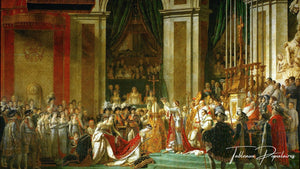
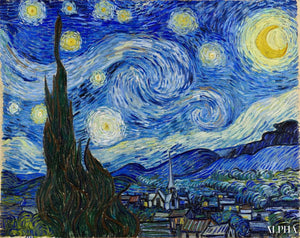
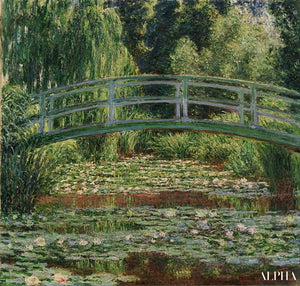
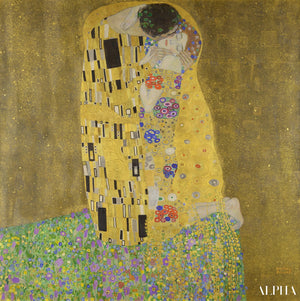
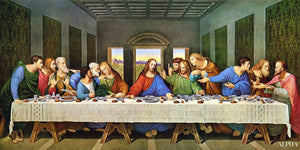
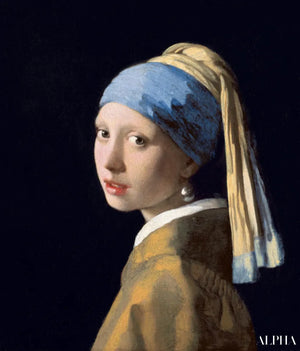
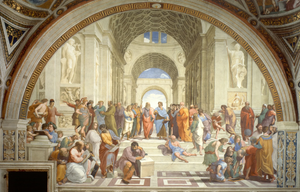
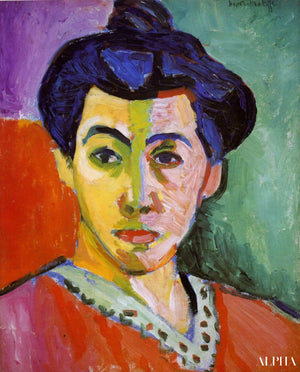
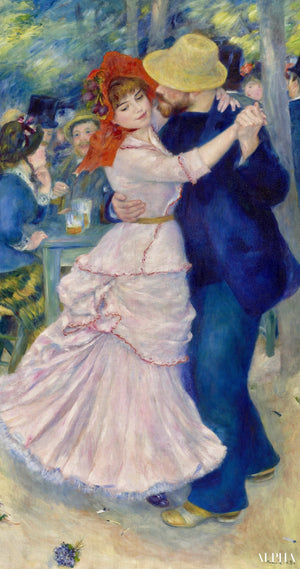


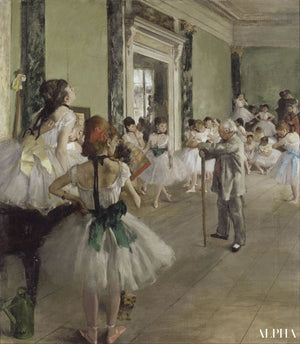
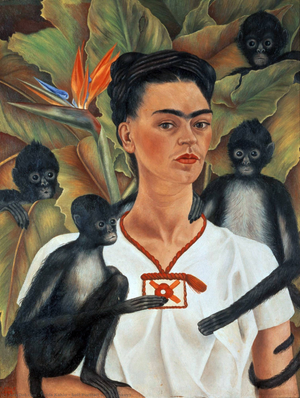
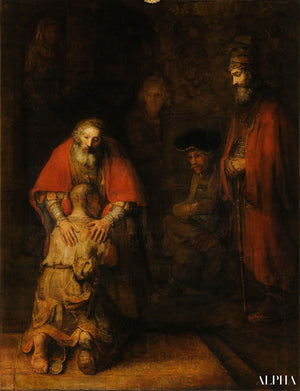

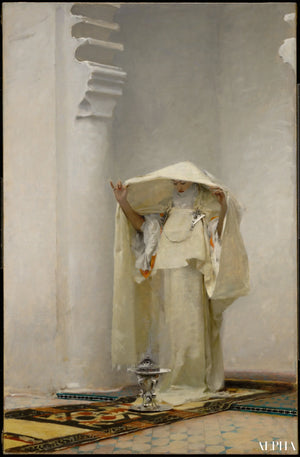
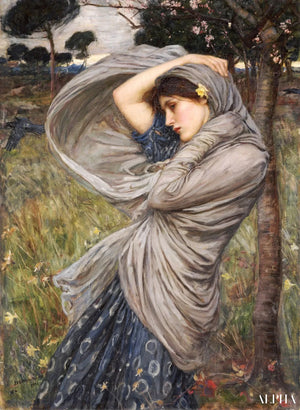

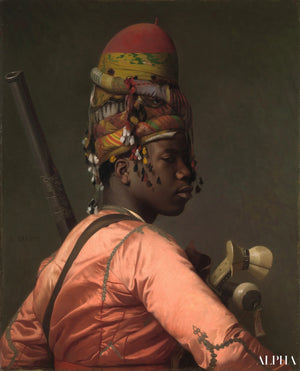





0 comments